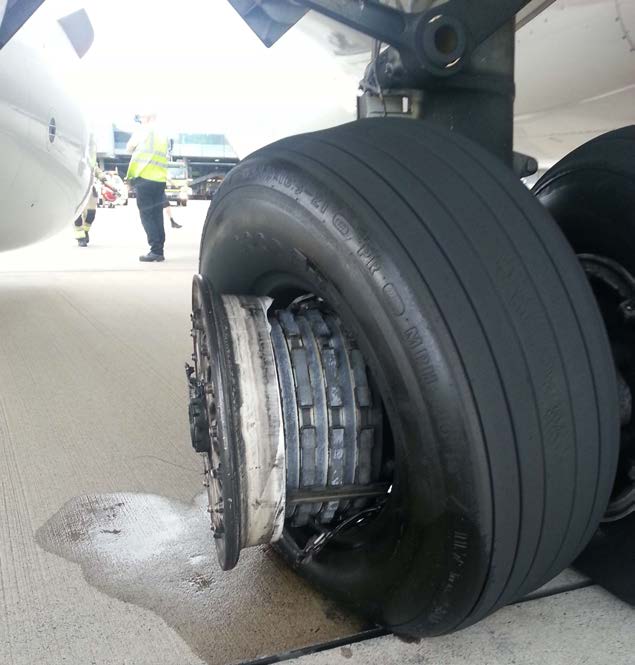 VH-VUH 737-800 Wheel Assembly Failure During Taxy
VH-VUH 737-800 Wheel Assembly Failure During Taxy
Home > Accident News > VH-VUH
Contents
30 Mar 2020 - 737-800, VH-VUH (34440/2003) operated by Virgin Australia had a failure of the #1 main wheel assembly whilst taxying at Brisbane on 4 Jan 2017.
What happened
On 4 January 2017, a Boeing 737-8FE, registered VH-VUH (VUH) and operated by Virgin Australia Airlines Pty Ltd (Virgin) was holding on B3 taxiway at Brisbane Airport, Queensland, when the crew heard a loud noise from what they thought was a burst tyre on the left main landing gear wheel. The crew attempted to return the aircraft to the gate, but were held short of the gate when an attending engineer observed that the number one main wheel assembly (left hand outboard wheel) had failed.
What the ATSB found
The ATSB found that the number one main wheel ruptured due to tie bolt assemblies that had loosened while in service. This allowed the two wheel halves to move relative to each other, resulting in a fatigue crack and eventual wheel rupture. The loosening was most likely due to the presence of anti-seize compound between the wheel halves, which affected the clamping forces.
The ATSB also found that while tie bolt assemblies on this wheel-type (single-web) were more prone to in-service loosening than dual-web wheels, there were no mandated inspections suitable for detecting such loosening. There were also no mandated risk controls to prevent loosening or subsequent rupture.
All of the information, photographs & schematics from this website and much more is now available in a 374 page printed book or in electronic format.
*** Updated 05 Aug 2023 ***


